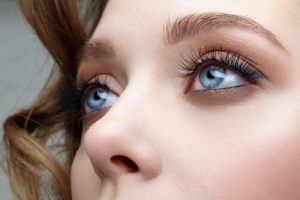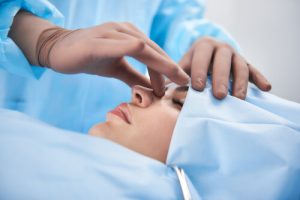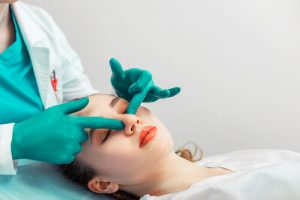In a world where first impressions often make a lasting impact, feeling confident in your skin is more important than ever. For many, the journey to self-assurance leads them to consider cosmetic enhancements, and one of the most transformative yet nuanced procedures is nose plastic surgery. This operation, medically known as rhinoplasty, goes beyond mere aesthetics—it can balance facial features, improve breathing issues, and ultimately boost self-esteem. This comprehensive guide will delve into everything you need to know about nose plastic surgery, from the initial consultation to post-operative care, so you can make an informed decision about this life-changing procedure.
Overview of rhinoplasty and its growing popularity
Nose plastic surgery, commonly known as rhinoplasty, is a surgical procedure that alters the shape, size, or proportions of the nose, and it’s gaining traction like never before. According to statistics from medical associations and cosmetic surgery organisations, rhinoplasty consistently ranks among the top five most popular cosmetic surgeries worldwide. Its growing popularity can be attributed to several factors—advancements in surgical techniques that offer more natural results, the democratisation of cosmetic surgery, making it more accessible to a broader audience, and the rising influence of social media, where the “perfect nose” often garners more likes and follows.
Whether for aesthetic refinement, functional improvement, or a combination of both, rhinoplasty has moved from a procedure reserved for the rich and famous to a more commonly accepted form of self-enhancement. With increasingly customised approaches to suit individual needs and facial structures, it’s no wonder more people are turning to rhinoplasty to boost their confidence and improve their quality of life.
Importance of feeling confident in the appearance of your nose
Given its central location on the face, the nose plays a pivotal role in our overall appearance and, by extension, how we feel about ourselves. It’s one of the first things people consciously or subconsciously notice when they look at us. This makes how we perceive our noses crucial to our self-image and confidence.
 Facial Harmony
Facial Harmony
A crooked nose can significantly impact the overall balance and harmony of the face. Whether it’s the size, shape, or angle, the nose can complement or distract from other facial features like the eyes, mouth, and cheeks. When you are confident about the appearance of your nose, it naturally enhances your overall facial aesthetics and contributes to a more balanced appearance.
Psychological Impact
Feeling self-conscious about a facial feature can have far-reaching psychological consequences, including decreased self-esteem, social anxiety, or depression. Conversely, satisfaction with one’s nose can dramatically boost self-confidence, increasing social interaction and overall well-being.
Professional and Social Benefits
Believe it or not, confidence can impact various aspects of life, including professional interactions and social engagements. People who feel confident about their appearance, including their facial features, are often more likely to engage in social activities, perform well in job interviews, and seize opportunities that come their way.
Functional Aspects
It’s not just about looks; a well-proportioned nose can also have functional benefits, particularly when it comes to breathing. Some people opt for rhinoplasty for medical reasons, like improving a deviated septum, which can result in better respiratory function and increased physical activity. Feeling confident about your nose’s appearance and functionality can, therefore, be a double win.
Understanding Rhinoplasty
Rhinoplasty, commonly referred to as a “nose job,” is a surgical procedure that modifies the structure of the nose for cosmetic or functional reasons. However, it’s important to dispel some misconceptions and clarify what rhinoplasty is and isn’t, as its portrayal in popular media often lacks nuance.
What Rhinoplasty Surgery Is
- Cosmetic Enhancement: Rhinoplasty can be performed to change the size, shape, and angle of the nose, improving its proportion concerning other facial features.
- Functional Repair: Beyond aesthetics, rhinoplasty can also resolve functional issues. For example, it can correct a deviated septum, improving breathing difficulties.
- Personalised: Modern rhinoplasty is highly customisable. Surgeons now employ advanced techniques to make subtle alterations that look natural rather than the one-size-fits-all procedures of the past.
- Long-lasting Impact: Generally, the results of a well-performed rhinoplasty are long-lasting, sometimes permanent, offering lifelong benefits in appearance and functionality.
What This Nose Surgery Isn’t
- Instantaneous: Contrary to what some may believe, rhinoplasty results aren’t immediately visible. Post-operative swelling and healing time are factors to consider.
- Risk-Free: Like any surgical procedure, rhinoplasty comes with its set of risks, such as infection, bleeding, or adverse reactions to anaesthesia.
- A Cure-All for Self-Esteem: While many experience a significant boost in confidence post-surgery, this nose surgery is not a guaranteed solution for deeper emotional or psychological issues related to self-esteem.
- Reversible: Although secondary or revision rhinoplasties can be performed, the procedure is generally permanent. Therefore, the decision to undergo surgery should be made carefully.
The Consultation: Setting the Stage for Success
The consultation is a pivotal step in your rhinoplasty journey, serving as the foundation for your surgical experience. This is not just a preliminary formality; it’s an opportunity to establish a rapport with your surgeon, clarify your objectives, and set realistic expectations. Here’s what you should consider during this crucial phase to set the stage for success.
Choosing a Qualified Surgeon
The first and perhaps most critical aspect is selecting a qualified, board-certified plastic surgeon specialising in rhinoplasty. This ensures that the person guiding you through the process has the expertise to achieve the best outcome.
What to Expect During the Consultation
During this initial meeting, your surgeon will typically conduct an interview to know your medical history, thoroughly examine your nose, and use computer imaging to show potential results. This is your chance to openly discuss your aesthetic and functional goals, so be prepared to articulate what you hope to achieve.
Questions to Ask
To make the most out of your consultation:
- Come prepared with questions.
- Inquire about the surgeon’s experience, preferred surgical techniques, the rhinoplasty cost, and what kind of post-operative support they offer.
- Ask to see before-and-after pictures of previous rhinoplasties they have performed, especially those similar to what you’re aiming for.
Red Flags to Watch Out For
Be wary of plastic surgeons who make exaggerated promises or downplay the risks associated with the procedure. A reputable surgeon will provide a balanced perspective, outlining the benefits and limitations of what rhinoplasty can achieve for you.
 The Importance of Psychological Preparedness
The Importance of Psychological Preparedness
Lastly, use the consultation to assess your emotional readiness for the surgery. Some people find that after surgery, their nose is uneven or does not look how they had hoped. In this case, they may need further surgery. A responsible surgeon will gauge whether you have realistic expectations and opt for the procedure for the right reasons, not just external pressures or fleeting whims.
The Procedure: What Happens on the Day
After weeks or perhaps months of preparation, the day of your rhinoplasty procedure has finally arrived. Understandably, you might be feeling a mix of excitement and apprehension. Knowing what to expect can go a long way in easing your nerves and setting you up for a successful outcome. Here’s an overview of what happens on the day of your nose plastic surgery.
Pre-Operative Steps
Before the procedure, you’ll undergo a final check-up to ensure you’re physically ready for surgery. Per your surgeon’s guidance, you’ll likely have fasted for a certain period before the operation and will have stopped taking certain medications or supplements. This is also when the surgical team will confirm the details of the procedure, including anaesthesia choices and incision techniques.
Anaesthesia and Initial Incisions
Most rhinoplasties are performed under general anaesthesia, although local anaesthesia with sedation is also an option for less complex cases. Once the anaesthesia has taken effect, your surgeon will make the necessary incisions—these could be either inside the nostrils (closed rhinoplasty) or outside, usually at the base of the nasal septum (open rhinoplasty).
Surgical Alterations
The exact steps will vary based on your specific needs and goals. Still, they may include reshaping the bone and cartilage, adjusting the nostrils and nasal tip, or correcting a deviated septum. Precision is key; even small changes can significantly impact your appearance and breathing function.
Closure and Immediate Aftercare
Once the changes have been made, the surgeon will close the incisions and may place a splint on your nose to help maintain its new shape. Depending on the complexity of the operation, the procedure can take anywhere from one to several hours.
Transitioning to Recovery
After the surgery is completed, you’ll be moved to a recovery room where medical staff will closely monitor you as you wake up from anaesthesia. Once you’re stable, you’ll either be released to go home or kept overnight for observation, depending on your surgeon’s recommendation and the extent of the surgery.
The day of the procedure is a culmination of all the consultations, preparations, and decisions that led you to this point. By understanding what happens at each stage, you’ll be better prepared for the experience, making it easier to focus on the most important aspect: the improved well-being and enhanced self-confidence that your rhinoplasty can bring.
Post-Operative Care and Long-term Results
The journey toward a new and improved nose doesn’t end when you leave the operating room; proper post-operative care is crucial to achieving the best possible long-term results. Here’s a comprehensive look at what you should expect and how to manage the post-surgical phase for optimal outcomes.
Immediate Aftercare
You’ll likely experience discomfort, swelling, and bruising right after the surgery. Following your surgeon’s guidelines for pain management and reducing inflammation is essential. You may also have a nasal splint or packing to support the new shape of your nasal passages; these are usually removed within a week.
 Timeline for Healing
Timeline for Healing
Healing after rhinoplasty is a gradual process. While significant swelling and bruising generally subside within the first few weeks, subtle changes can continue to occur for up to a year. Patience is key, as are regular follow-up appointments with your surgeon to monitor progress.
Risks and Potential Complications
Like other surgical procedures, rhinoplasty carries some risks, such as infection, bleeding, or an adverse reaction to anaesthesia. Specific to this procedure, there may be difficulties in breathing through the nose, or you might not be satisfied with the cosmetic outcome. Being aware of these potential complications and addressing them promptly with your surgeon is vital.
Achieving Long-term Success
The long-term success of a rhinoplasty is heavily influenced by how well you adhere to post-operative guidelines. Activities like smoking, excessive alcohol consumption, or engaging in strenuous physical activities too soon can compromise your results.
Your New Normal
Once you have fully healed, you can expect a more balanced facial appearance and, if applicable, improved respiratory function. The psychological benefits often include increased self-esteem and greater comfort in social settings. However, it’s important to remember that while the physical changes are often permanent, your perception of your new look may take time to adjust.
References:
https://www.mayoclinic.org/tests-procedures/rhinoplasty/about/pac-20384532
https://my.clevelandclinic.org/health/treatments/11011-rhinoplasty
https://www.plasticsurgery.org/cosmetic-procedures/rhinoplasty/animation
https://utswmed.org/medblog/rhinoplasty-nose-job/
https://www.webmd.com/beauty/cosmetic-procedures-nose-job-rhinoplasty
https://www.hopkinsmedicine.org/health/treatment-tests-and-therapies/nose-reshaping
https://www.betterhealth.vic.gov.au/health/conditionsandtreatments/nose-rhinoplasty

